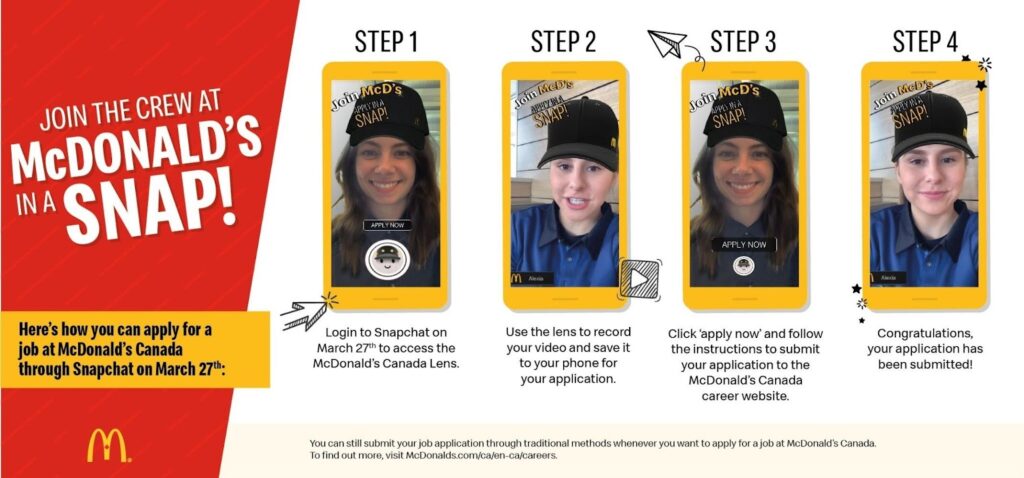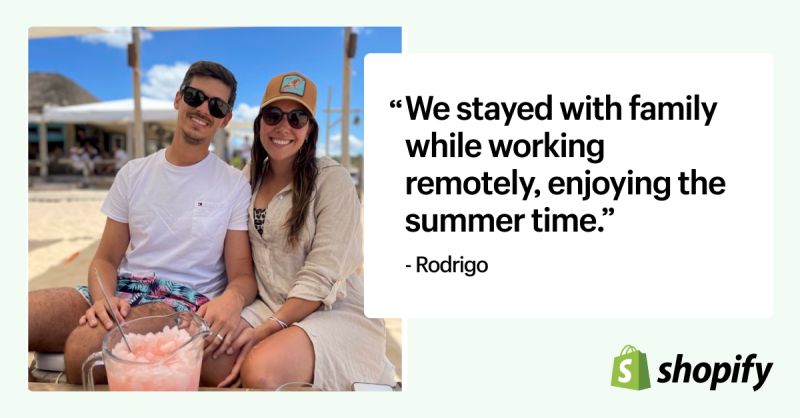How to Create a Recruitment Advertising Strategy That Targets the Right Candidates

You’ve crafted the perfect job description. You’ve posted it on all the usual platforms. And now… You wait. A few days pass, then a week. Still no promising candidates. What gives?
If this sounds familiar, you’re not alone. Many companies rely on outdated, scattershot methods to promote their open roles, and then wonder why the right candidates never come calling. The truth is, posting and praying isn’t a strategy.
A strong recruitment advertising strategy bridges the gap between a job opening and the right talent. It’s targeted. It’s data-driven. And when done right, it turns passive observers into motivated applicants. In this guide, we’ll break down what a recruitment advertising strategy is, what sets it apart from general job postings, and how you can build one that attracts the kind of talent you actually want to hire.
What Is a Recruitment Advertising Strategy?
A recruitment advertising strategy is a targeted, data-backed plan for promoting job openings to the candidates you want to hire most. It goes beyond simply posting to a few job boards and hoping for organic traction. Instead, it involves using paid advertising channels, like sponsored job listings, social media ads, search engine marketing, and display ads, to actively put your open roles in front of qualified candidates where they’re already spending time online.
In contrast to organic recruiting, which relies on inbound traffic through unpaid methods like company career pages, employee referrals, or SEO-optimized job posts, recruitment advertising is proactive. It’s about meeting candidates where they are and getting your opportunity in front of them, whether they’re actively job hunting or not.
The goal isn’t just volume; it’s relevance. A smart recruitment advertising strategy doesn’t cast the widest net possible, it pinpoints the digital spaces where your ideal candidates spend time and crafts messaging that speaks directly to their interests, motivations, and career goals.
Done right, it boosts visibility, attracts better-fit applicants, and reduces the time and cost per hire, especially for hard-to-fill roles.
The Key Components of a Successful Recruitment Advertising Strategy
A strong recruitment advertising strategy is built on structure, data, and intentional choices. The most effective campaigns share a few foundational elements that work together to attract, engage, and convert the right candidates.
A clear understanding of the target candidate
Before you spend a dollar on advertising, you need to know who you’re trying to reach. This includes defining the ideal candidate’s experience level, skills, location, job search behavior, and motivations. This insight guides everything from the platforms you choose to the language you use in your ads.
Well-written, compelling job ads
Your job ad is your first impression. It should clearly explain what the job entails, why it matters, and what benefits the candidate can expect. Ads that focus only on what the company wants tend to underperform. Ads that highlight career growth, company culture, and tangible benefits perform significantly better.
Related: Catchy Headlines for Job Ads With Examples
Channel selection based on behavior and budget
Not every job ad needs to be everywhere. Success comes from placing ads where your ideal candidates are likely to see them. For tech roles, that might be Stack Overflow or Reddit. For creatives, Instagram and LinkedIn. For high-volume hourly roles, it could be Indeed or Facebook. Choosing the right mix is key to both reach and ROI.
Find the perfect fit for your team.
Speak to one of our recruiting experts today.
Strong employer branding
Even the most eye-catching ad can fall flat if the company’s reputation is unclear or unappealing. An effective recruitment ad strategy should align with your employer branding strategy, highlighting your mission, culture, values, and what makes your company unique.
Related: How to Elevate Your Employer Brand to Recruit Top Candidates
Tracking and performance metrics
You can’t improve what you don’t measure. Whether you’re tracking cost-per-click, apply rate, or quality-of-hire, using analytics helps you adjust your strategy based on real performance, not assumptions.
A smooth candidate experience
Once a candidate clicks your ad, what happens next? A clunky or confusing application process is one of the fastest ways to lose top talent. A mobile-optimized, streamlined application flow and a fast follow-up process are just as important as the ad itself.
Step-by-Step: How to Build a Recruitment Advertising Strategy That Works
Creating a successful recruitment advertising strategy requires being intentional, strategic, and data-informed. Here’s how to build a campaign that connects with the right candidates and delivers real hiring results.
Step 1: Define your hiring goals
Start by clarifying what you want to accomplish. Are you trying to fill one specific high-priority role? Build a talent pipeline for future growth? Improve candidate quality? Your advertising strategy should align with these goals, allowing you to choose the right tactics and measure success effectively.
Step 2: Understand your ideal candidate
Build a candidate persona that includes details like skill set, experience level, career stage, geographic location, and even interests or values. Think beyond what’s listed in the job description to understand the person behind the resume. This persona will shape every part of your ad strategy, from copywriting to targeting.
Step 3: Choose the right platforms
Select advertising channels based on where your ideal candidates spend time. Consider sponsored job boards (e.g., LinkedIn, Indeed), search engine ads (e.g., Google Ads), paid social media (e.g., Facebook, Instagram), and niche platforms (e.g., Dribbble for designers, Dice for tech professionals). Use historical performance data if available to prioritize.
Step 4: Craft messaging that resonates
Tailor your job ad to speak to what your target candidates care about. That might be remote flexibility, meaningful work, growth opportunities, or a collaborative team culture. Be honest, engaging, and concise—ads that sound generic or overly corporate are easy to scroll past.
Related: Best Recruiting Messages to Enhance Your Candidate Outreach
Step 5: Set a budget and bidding strategy
Whether you’re working with a flat monthly spend or using a pay-per-click model, be intentional with your budget. Prioritize platforms with a proven track record for your audience and test small before scaling. Don’t forget to factor in time for campaign management and optimization.
Step 6: Launch and monitor performance
Track how your ads are performing across each channel using metrics like impressions, clicks, apply starts, and conversions. Be ready to adjust as high-performing campaigns often require ongoing tweaks to maximize reach and efficiency.
Step 7: Optimize based on data
Review campaign data weekly or bi-weekly. Shift budget toward high-performing ads, pause low-performing ones, and test variations of headlines, calls to action, or visuals. Over time, your recruitment advertising becomes smarter, faster, and more cost-effective.
Common Mistakes to Avoid in Recruitment Advertising
Even the most well-funded recruitment advertising strategy can fall short if it’s built on the wrong assumptions. These common missteps often lead to wasted budget, weak applicant pools, and frustrated hiring teams. Here’s what to watch for and how to steer clear.
Treating all roles the same
Running the same type of ad across every role and platform rarely works. What attracts a seasoned software engineer is entirely different from what appeals to an entry-level customer service rep. Each job deserves its own tailored messaging, targeting, and budget.
Prioritizing reach over relevance
Yes, it’s exciting to rack up thousands of ad impressions. But if those eyeballs aren’t from qualified candidates, they don’t matter. A good recruitment ad strategy focuses on quality over quantity, using audience filters and behavioral data to narrow in on the right viewers.
Ignoring the candidate experience
A compelling ad gets attention, but a clunky application process quickly drives candidates away. Requiring logins, asking for the same information twice, or making the process too lengthy can significantly impact conversion rates. Don’t let the backend undo the hard work your ads are doing up front.
Failing to track ROI
Many companies run recruitment ads without clear metrics for success. If you’re not tracking key performance indicators like cost-per-click, apply rate, and quality-of-hire, you’re flying blind. Without data, there’s no way to optimize or justify spend.
Letting campaigns run on autopilot
“Set it and forget it” might work for crockpots, but not for job ads. Platforms like LinkedIn and Google Jobs are dynamic, meaning what worked last month may flop this month. Regular check-ins and adjustments are critical to staying competitive.
Overlooking employer branding
An ad might get clicks, but if candidates land on a bland job description or a career page with no personality, they’ll bounce. Every touchpoint, from ad to apply, should reflect your brand voice, culture, and values.
How AI and Machine Learning Are Changing Recruitment Advertising
Artificial intelligence and machine learning have become powerful tools in recruitment advertising, not as flashy add-ons, but as core drivers of more innovative, more efficient hiring campaigns. These technologies are reshaping how employers reach candidates, personalize messaging, and optimize spend.
Smarter audience targeting
AI can analyze massive datasets to predict where top candidates are most likely to be found and when they’re most likely to engage. Instead of relying on broad demographics, machine learning utilizes behavioral signals, such as search history, job changes, and engagement patterns, to serve ads to those most likely to apply.
Automated ad placement and optimization
Modern recruitment platforms utilize AI to automate ad distribution, reallocating budgets to the most effective channels in real-time. For example, if a job ad is performing better on Instagram than on LinkedIn, the platform can automatically adjust your budget allocation, improving results without manual intervention.
Personalized ad messaging
Some AI tools can dynamically adjust ad copy based on the user viewing it. A software engineer in Seattle might see different headlines or benefits than one in Austin, based on regional preferences or previous browsing behavior. This level of personalization boosts relevance and increases conversion.
Predictive analytics for hiring success
Machine learning models can go beyond clicks and applies; they can help predict quality-of-hire by analyzing past applicant data. Over time, your recruitment advertising strategy becomes more refined, targeting individuals who not only apply but thrive in the role.
Related: Is the Future of Hiring in Predictive Analytics?
AI-powered chatbots and lead capture
On the candidate experience side, AI chatbots are being used to answer FAQs, collect pre-screening info, and guide applicants through the next steps. This reduces drop-off and maintains high engagement, especially outside business hours.
Tools and Platforms to Power Your Strategy
The right tools power a strong recruitment advertising strategy. These platforms enable you to reach your target audience, automate delivery, analyze performance, and continually improve your results. The right mix depends on your budget, hiring goals, and the candidate personas you’re targeting.
Job advertising platforms
These are the go-to channels for paid job ads and sponsor listings.
- LinkedIn Talent Solutions: Ideal for professional and executive-level roles, with robust targeting by job title, industry, and behavior.
- Indeed Sponsored Jobs: Offers mass visibility and performance-based pricing. Great for high-volume hiring across industries.
- ZipRecruiter: Distributes ads to hundreds of partner sites with AI matching and performance dashboards.
Programmatic advertising tools
Programmatic platforms automatically place and optimize job ads across multiple channels, utilizing AI to dynamically adjust spend in real-time.
- Appcast: Uses real-time bidding to place your job ads where they’ll get the best ROI. Ideal for performance-driven campaigns.
- Joveo: Delivers AI-powered media buying and personalized job recommendations to target the right talent.
- PandoLogic: Offers predictive algorithms and full automation, helping reduce cost-per-applicant while improving quality.
Paid social and search
When you’re targeting passive candidates or niche roles, search and social ads offer powerful reach.
- Meta Ads (Facebook/Instagram): Ideal for visual, culture-focused campaigns and location-based targeting.
- Google Search & Display Ads: Captures high-intent job seekers based on search behavior.
- YouTube Ads: For employer branding videos that reach early-career and passive audiences.
Analytics & optimization
Data is the backbone of any ad strategy. These tools help you measure, refine, and scale.
- Google Analytics: Track candidate behavior from ad click to application.
- UTM parameters: Add these to URLs to track source-level performance in your ATS or CRM.
- Recruitment CRMs (like Beamery or Avature): Help nurture leads and keep your talent pipeline warm over time.
Winning Recruitment Ad Campaign Examples
Seeing a strong recruitment advertising strategy in action can spark ideas and help benchmark your own campaigns. The best examples blend eye-catching visuals with tailored messaging, crystal-clear calls to action, and a strong tie to employer branding. Below are several real-world campaigns from well-known companies that nailed it, and what you can take away from each.
McDonald’s Snapchat Recruiting Filter
Platform: Snapchat
Campaign type: Geo-targeted lens filter

Why it worked:
McDonald’s used a custom Snapchat lens that let users virtually try on a McDonald’s uniform and “apply” directly through the app. It was light, playful, and reached Gen Z where they already were: on social media. This campaign boosted applications for hard-to-fill restaurant roles and showed the power of native, creative content.
Amazon’s High-Volume Hiring via Indeed Sponsored Jobs
Platform: Indeed
Campaign type: Sponsored listings + display ads
Why it worked:
Amazon used targeted sponsored job postings for warehouse and seasonal roles, coupled with video display ads showing their streamlined hiring process. Clear pay, flexible shifts, and “apply in 3 clicks” messaging led to a massive uptick in qualified applicants.
Shopify’s “Work Anywhere” Remote Ad Series
Platform: Instagram & LinkedIn
Campaign type: Video + carousel ads

Why it worked:
Shopify leaned into remote work perks with simple, highly visual ads that featured employees working from scenic locations, such as beaches and forests. Each ad drove traffic to their careers page with a “See what remote-first really means” CTA. It aligned perfectly with their employer brand and appealed to digital-first talent.
Google’s Tech Hiring Ads on YouTube
Platform: YouTube
Campaign type: Pre-roll video ads
Why it worked:
Google ran short-form videos highlighting real engineers working on impactful projects. These ads were served before other tech-related content, capturing the attention of developers and engineers who were already in the right mindset. It was aspirational, targeted, and direct.
Let Us Help You Do the Heavy Lifting
A great recruitment advertising strategy doesn’t just bring in more applicants; it brings in the right ones. But creating, managing, and optimizing a campaign that actually works takes time, expertise, and a deep understanding of what motivates today’s candidates. That’s where we come in.
At 4 Corner Resources, we specialize in helping companies like yours attract top talent across industries through strategic, data-driven recruiting solutions. Whether you need help building a campaign from scratch, refining your messaging, or managing ad spend across multiple platforms, our team can do the heavy lifting so you don’t have to.
We combine personalized service with proven strategies to help you fill roles faster, smarter, and more cost-effectively. From high-volume hiring to hard-to-fill niche roles, we know how to reach the candidates who are the right fit for your team.
Ready to turn clicks into quality hires? Let’s talk.
